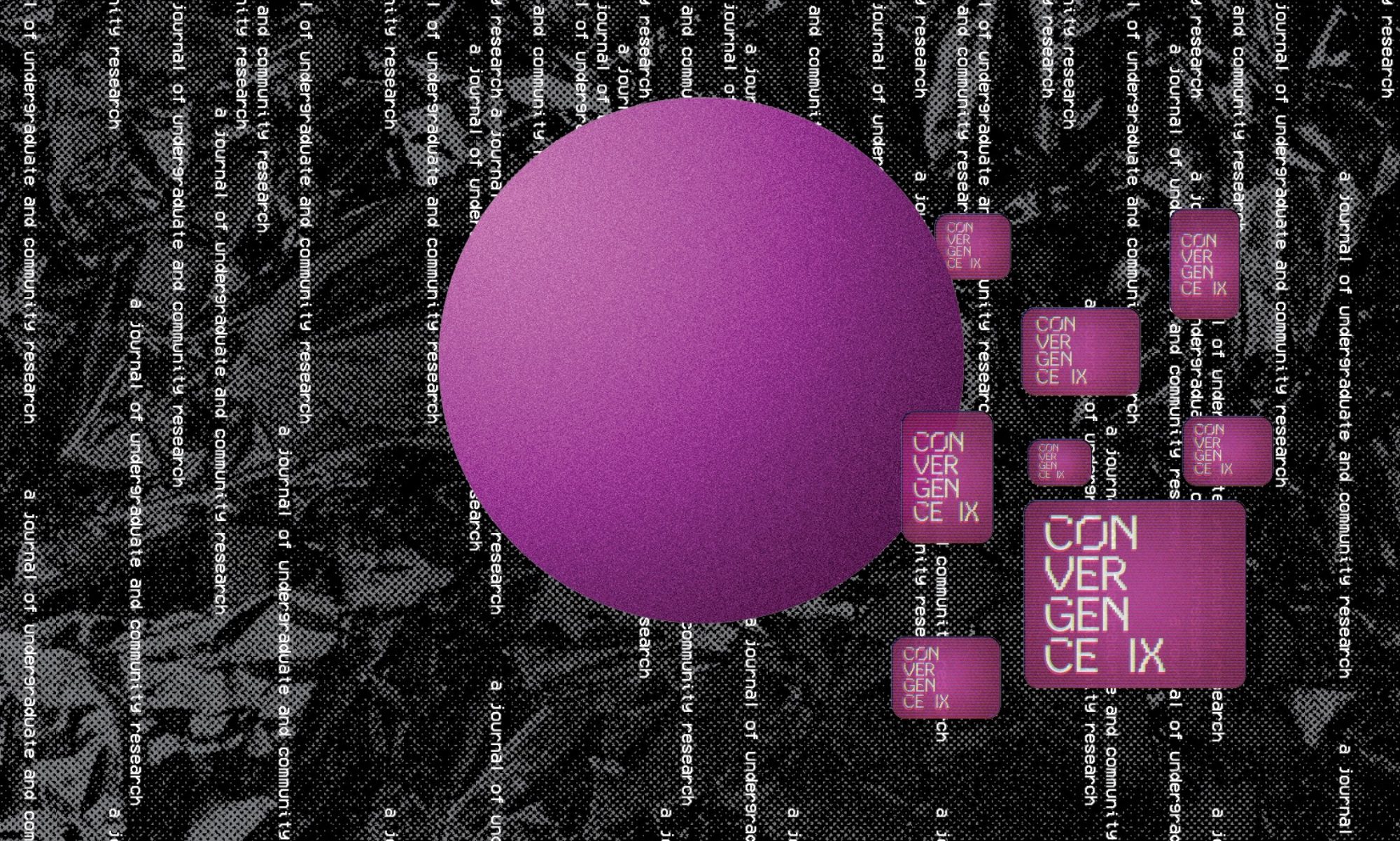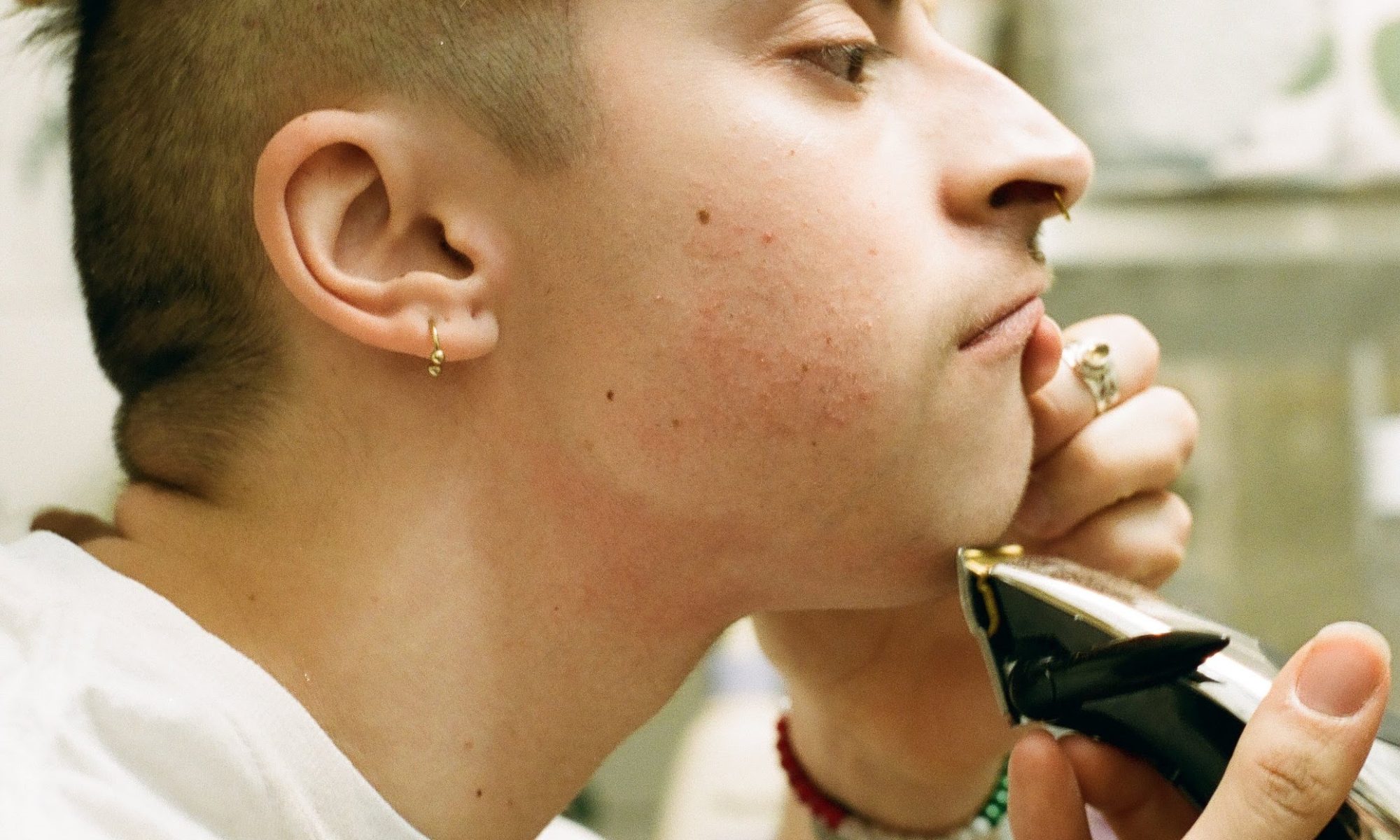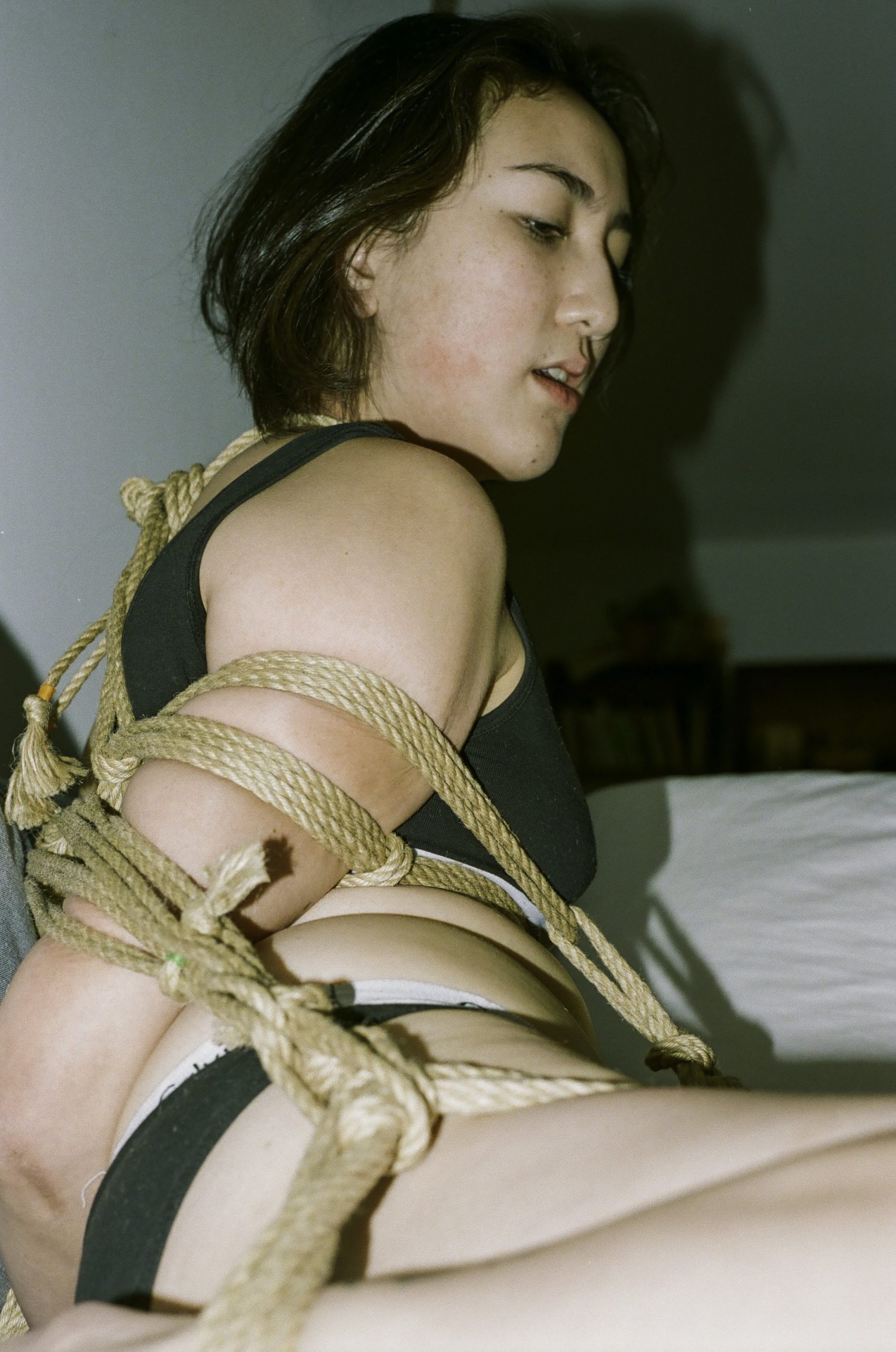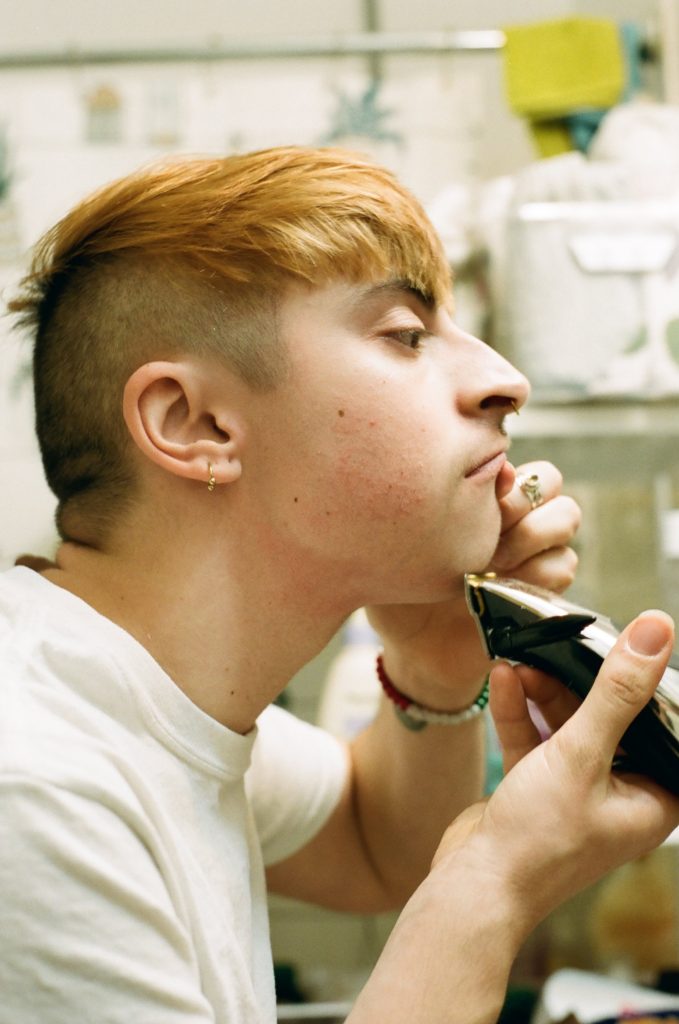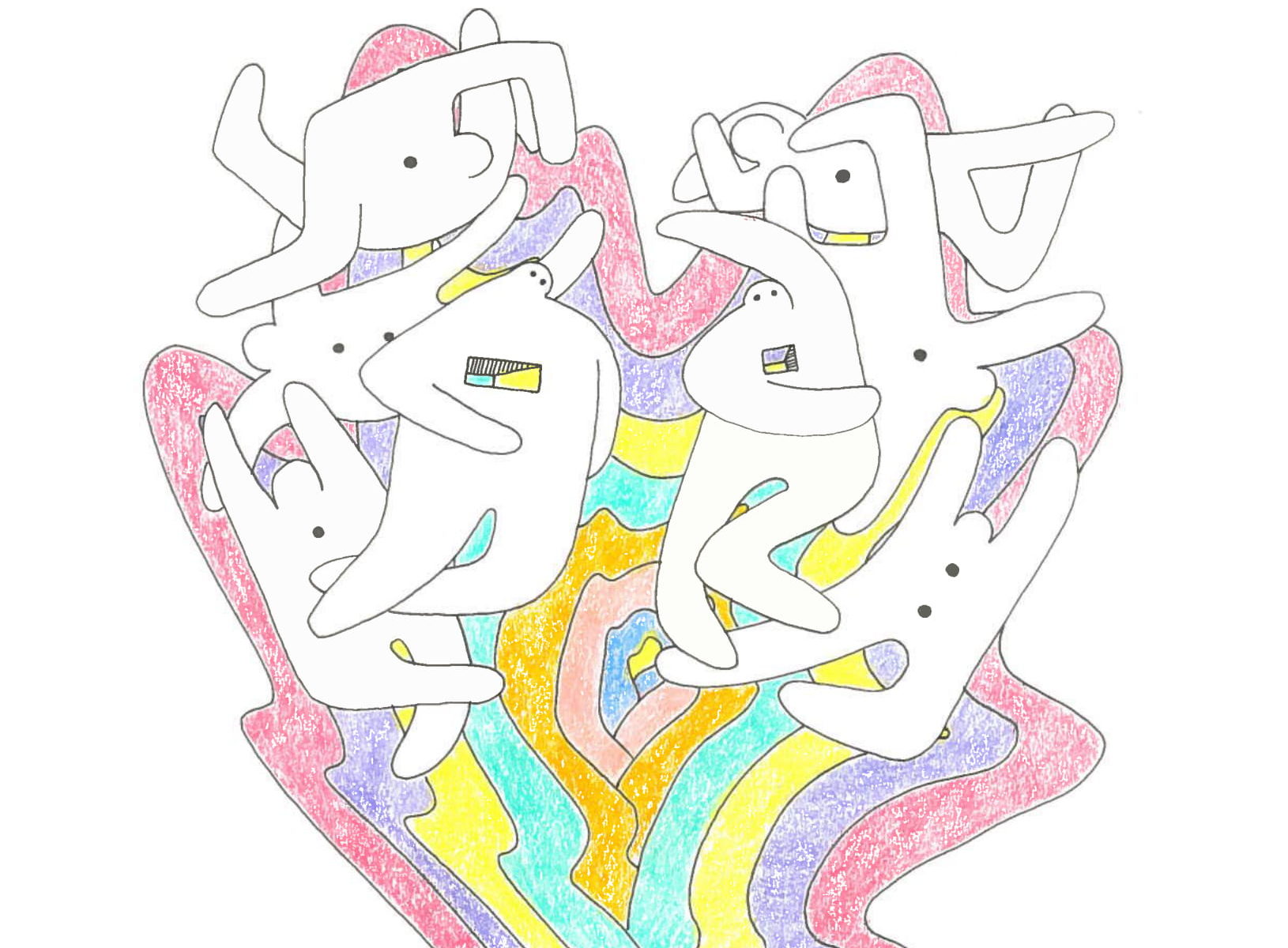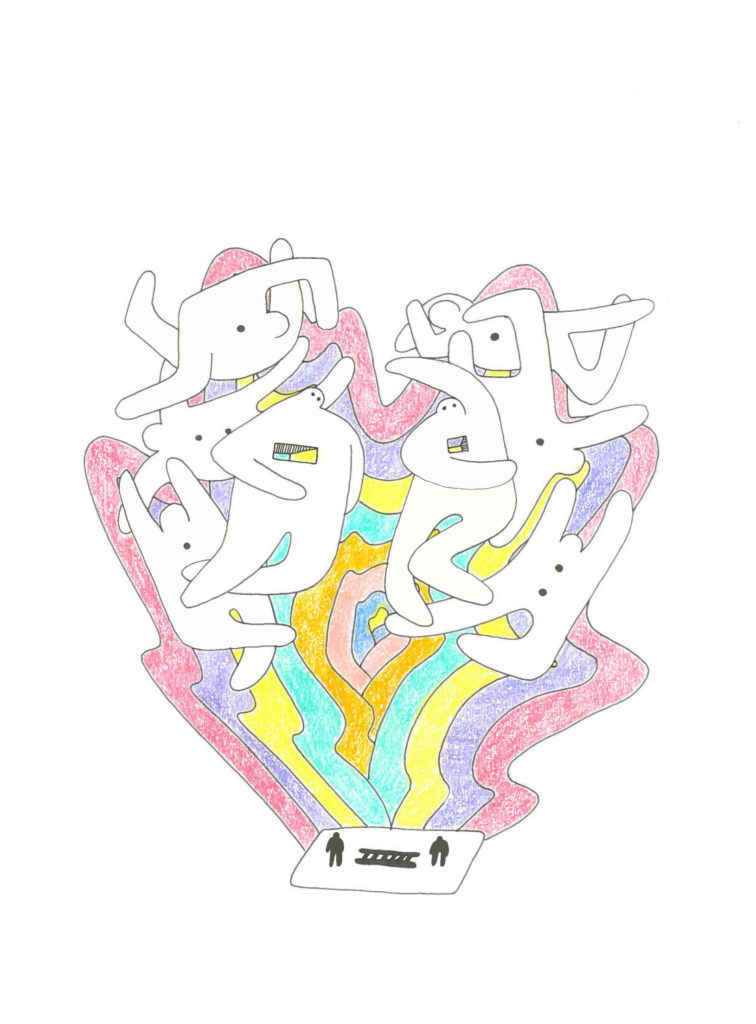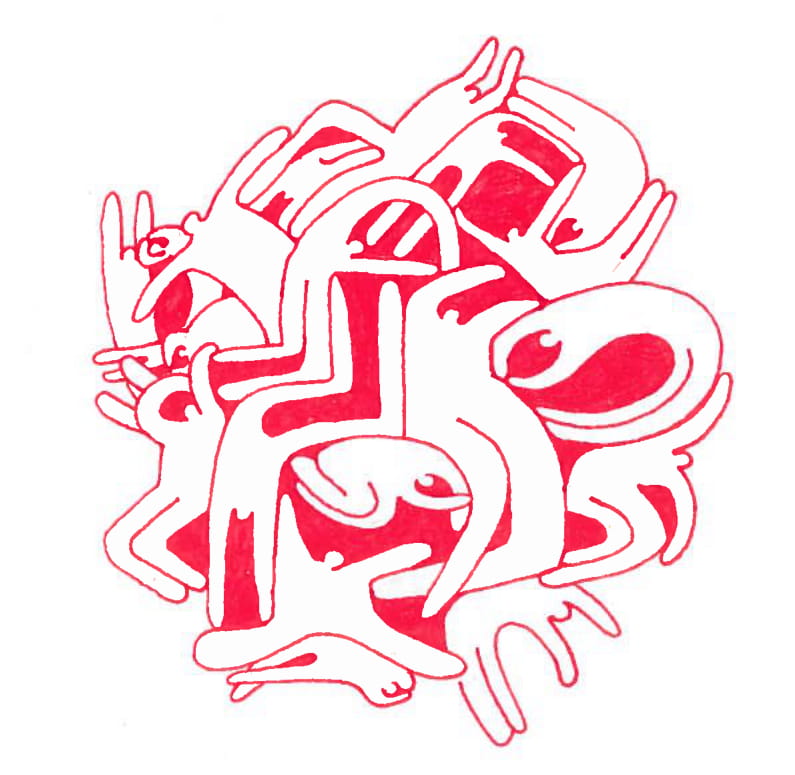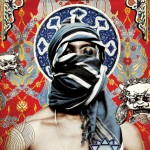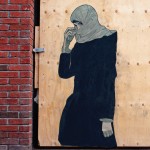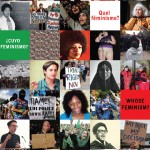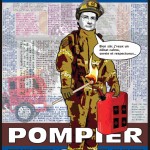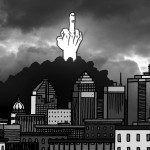Brooke Nancekivell
Introduction
The Midnight Kitchen is a non-profit, volunteer and worker run food collective dedicated to providing affordable, healthy food to as many people as possible. Based out of McGill University in Montreal, QC we provide free/by donation vegan lunches 5 days a week, Monday through Friday, at 12:30 in the Shatner building on McGill campus.(“About MK”)
The Midnight Kitchen (MK) is more than just a kitchen. It is a radical collective, an activist hub, an anti-oppressive educator, and a mobilizer for action. It is a space that allows social movements to germinate. Over the past decade, it has creatively opposed oppressive food systems by combining cooking and serving meals with teach-ins, workshops, and political conversation, together establishing MK as an autonomous space within social movements. Drawing on both academic articles and personal experience organizing with the Midnight Kitchen, I will discuss how the political institutions at McGill and beyond have shaped the creation and growth of organization. I will argue that its political history has shaped its anti-capitalist identity, which has in turn molded MK’s tactical choices and the role it plays in broader social movements.
Laying the foundation
Midnight Kitchen formed in 2002 in response to the increasing privatization of food services on the downtown campus at McGill University. Chartwells Corporation, a sub-company of Compass Group, began operations at McGill in 2000 (Chiliak et al., Lewis). With over 50,000 locations serving 4 billion meals per year in venues ranging from prisons to sports stadiums to mining camps, Compass Group is the largest catering service and food provider in the world (“Who we are”). Soon after their arrival on campus, they began monopolizing food services, with Chartwells becoming the primary determiner of everything from distribution to nutrition to pricing, limiting the options and accessibility of dining for a campus of over 30,000 full-time students (“Enrollment reports”, Lewis).
The process of large companies privatizing the food industry is a phenomenon seen not only on university campuses, but on a global scale. Chain restaurants, cafeterias, and grocery stores are increasingly becoming key sources of people’s everyday food intake, meaning that people’s options are dictated by a market-based system. Those with financial means are given access to a wide range of choices, but those living on low incomes face restricted autonomy and access in caring for their own nutritional needs (Lewis). The contractual relationship between McGill University and Chartwells Corporation is a continuation of this process, as well as a further invasion of private interest into the sphere of a public university. With this greater context in mind, I will discuss how Midnight Kitchen came to be, and why it was established in 2002, two years after Chartwells initiated its services at McGill.
One explanation is provided through the theory of political opportunity structures. This theory, advocated by sociologist Sidney Tarrow, refers to the conduciveness toward change of the institutions within which a social movement takes place. The degree of openness, political leanings, and structures within an institution or set of institutions can determine aspects of social movement organizing such as timing, tactics, framing, and development of alliances (Staggenbourg).
Midnight Kitchen was founded at a moment of opening in the political opportunity structure at McGill. In April 2001, Québec City hosted the Free Trade of the Americas Summit, prompting extensive organizing that brought students and activists together in anti-capitalist opposition. Connections made at the Summit led to the creation of GRASP(é), a new group at McGill focusing on issues of neoliberalism. GRASP(é) brought together students who were passionate, socially aware, and motivated to incite change. Its founding facilitated opportunities for students to meet and organize against privatization on campus, and they soon centred on Chartwells as a potential target. Without both the Summit and GRASP(é) providing the space for organizing, Midnight Kitchen may never have been formed (Lewis).
Additionally, GRASP(é) connected student activists who had a variety of connections both on and off campus (Lewis). According to resource mobilization theorists John D. McCarthy and Mayer Zald, social movement mobilization is dependent on the physical, social, and skills-based resources that opposing actors have both access to and ability to activate. This not only shapes the advent of mobilization, but the form and tactics a movement adopts (Staggenbourg). Students didn’t have, for instance, the financial and political capital to block Chartwells’ contractual agreements with McGill, but they were able to mobilize social linkages, organizing skills, and cooking know-how to build the foundations of the Midnight Kitchen. Their liaisons with organizations such as McGill Chaplaincy’s Rabbit Hole Café, the Catholic Students’ Centre, and Food Not Bombs developed into powerful allyships that provided materials, space, and mentorship during the kitchen’s fledgling stages (Lewis).
Their decision to take the route of community kitchen was also influenced by what Charles Tilly terms “repertoires of action”, or the modes of resistance that have developed and spread among activist groups (Staggenbourg). Midnight Kitchen had a local example of student anti-corporatization organizing in the People’s Potato, a collective kitchen at Concordia University which was formed in 1999 (“History of the Potato”). With three years of serving free vegan meals under their belt, the People’s Potato had legitimized student-supported community kitchens as a tactic against campus corporatization. Their existence set the stage for Midnight Kitchen to begin.
Within the past decade, Midnight Kitchen has transformed from a handful of student radicals cooking in borrowed spaces until the wee morning hours to an established university service with paid staff, dozens of volunteers, hundreds of daily attendees, and its own autonomous kitchen space. These transitions have been significantly influenced by the political opportunities available at McGill. When Midnight Kitchen was seeking funding in its beginning years, it received financial and institutional support from QPIRG-McGill, a social and environmental justice organization with a mandate to connect campus and community (“About – QPIRG McGill”, Lewis). As it began serving more students, MK allied with the Student Society of McGill University (SSMU), which provided them with meeting space, significant cash inflow through a student fee levy, and legitimacy among the student body. Significant lobbying from members and allies enabled Midnight Kitchen to successfully advocate for its own self-designed, semi-autonomous kitchen space within the SSMU building. The choice of operating a community kitchen, as opposed to other tactics, to oppose corporatization on campus, also opened many doors. MK’s anti-capitalist motivations alone may not have garnered support from SSMU, which is not explicitly committed to political change (“Our Mission”), but its commitment to providing a service to students gave the two organizations a common ground for alliance. Political opportunities are not merely set by institutions; they are also shaped by the modes of resistance.
Alliances with institutions within McGill also come with limits, however. Sometimes these are minor hindrances, such as not being allowed to serve lunch outdoors on gloriously sunny days, but other times they dramatically affect how the organization is run. For example, Midnight Kitchen’s finances are controlled by the SSMU, meaning that they are unable to withdraw cash on short notice, official receipts are required for all purchases, and payments are often sent out weeks or months after purchases have been made or services have been rendered. Such barriers may seem to pose a mere nuisance, but they limit Midnight Kitchen’s ability to act both autonomously and in accordance with its mandate. If the kitchen runs out of vegetable oil in the morning and there is no petty cash on hand, a volunteer must pay out of pocket and wait for reimbursement, which clashes with Midnight Kitchen’s anti-oppressive and anti-classist mandate. Although there are ways to maneuver around the system, it is important to note that the same political institutions that enable Midnight Kitchen’s work as a social movements actor also restrict its agency and independence.
Frames of Understanding, Frames of Action
…We aim to empower individuals and communities by providing a working alternative to current market-based systems of food collection and distribution. We oppose privatization, corporatization and other process that actively disempower people to obstructing their access to resources and independence… We recognize that much of the politics surrounding food production and distribution are part of a larger system of oppression… (“About MK”)
Framing is the practice of activists and actors aligning themselves and their struggle as part of a broader social movement. It can be significant in shaping the public perception of the organization, in building alliances and choosing tactics, and in affecting decision-making practices (Staggenbourg). The mandate of the Midnight Kitchen, quoted above, clearly outlines the organization’s framing as a social movement actor. It is explicitly anti-capitalist, anti-corporatization, anti-oppressive, and committed to social justice. According to social movements analyst Suzanne Staggenbourg, these labels constitute “master frames” used by multi-movement actors to encompass the many shared injustices they address (Staggenbourg). Frames not only help connect movements ideologically, but also affect and reflect the day-to-day operations of a group. In this section, I will discuss Midnight Kitchen’s food procurement as one example of how its anti-capitalist framing affects its logistical decisions.
Midnight Kitchen is no small operation. In addition to coordinating and executing daily lunchtime servings for approximately two hundred people, the kitchen caters for social-justice oriented actions or groups in Montréal. Given the aforementioned privatization of the food system, gathering sufficient ingredients to feed this many people while maintaining an anti-capitalist practice is a major feat. By establishing connections with local grocery stores to salvage produce no longer considered high-quality enough to sell, MK is able to use perfectly edible food that would otherwise be discarded. The willingness of grocery store employees to coordinate with Midnight Kitchen has transformed a miniscule political opening into sustainable fuel for the organization’s alternative structure. Nonetheless, MK still purchase goods such as beans, grains, and flour in bulk to supplement donations of produce. While they are working toward an anti-capitalist reality, the market system still constrains their actions and possibilities.
Despite its limits, Midnight Kitchen operates a more oppositional practice than parallel groups at other North American universities. Earthfoods Café at University of Massachusetts, Amherst, for instance, is a vegetarian collective that also serves food daily to a large student population, but they purchase their food from grocery stores and charge set prices for their meals. Their framing is similar to that of an independent or cooperative café: business-oriented, but highlighting the benefits of collective management and the restaurant-specific organizational skills their employees gain from working there (“Earthfoods Café”). Both Midnight Kitchen and Earthfoods Café title themselves collective kitchens, but MK’s explicitly anti-capitalist mandate means it functions very differently.
Yet even campus food collectives with similar framings may operate differently given their contextual political opportunity structures. Dalhousie University’s Loaded Ladle, for instance, sources their food from a local farmer through a collection of CSA (community supported agriculture) baskets. Sourcing locally is one of their methods of resistance to oppressive food systems, and it is facilitated by their positioning in Halifax, Nova Scotia, a small city surrounded by rural agriculture (“Loaded Ladle”). Midnight Kitchen could potentially liaise with agriculture programs at McGill’s Macdonald campus, which is based in the more rural Saint-Anne-de-Bellevue, but its location in the highly urbanized Montréal makes this strategy unnecessary, as there are a plethora of opportunities to reclaim edible food within the city limits. Even with similar political frames, organizations’ decisions are shaped by local contexts and opportunities.
From the Kitchen to the Streets
Lastly, Midnight Kitchen’s anti-capitalist framing affects its role as a social movements mobilizer. Students drawn to the kitchen by its by-donation meal become daily attendees, forming relationships with other students, volunteers, and staff that are grounded in the kitchen’s political context. Polletta argues that autonomous spaces including collective kitchens can be vital forces in social movements as creators of culture (Polletta 1999, 11-17). They offer the opportunity to explore alternative structures of organizing society, with values that are oppositional to the mainstream. Yet, their engagement in prefigurative organizing can be exceptionally trying, as people struggle to work within a broken system to both heal and create new means of relating to each other and to organizing. Providing an essential service such as meals, Polletta argues, can help to mitigate these difficulties and to fuel such organizations in the long-term (Polletta 1999, 12). Such is the case for Midnight Kitchen, where the experience of both going for lunch and becoming involved becomes about more than just the food that sustains it and its members, but also the friendships and social justice education that come with participating.
Beyond keeping their own institution afloat, Midnight Kitchen supplies a steady flow of mobilized students for outside movements and actions. Its position, especially due to its location in a university setting with strong supports, is fairly stable. It may organize workshops and teach-ins and provide sustenance for protesters, but it doesn’t organize mass-mobilizations or explicit direct actions. Rather, it educates people, engaging students who often have relatively few commitments into activist networks and providing a space for socialization into activism (McAdam).
Through kitchen-counter discussions of homemade tear gas remedies, lawyers to consult after being arrested, and how the police systemically target people of colour and trans people, MK exposes injustices and proposes alternative ways to examine the systems within which we live. These discussions instill values that mobilize toward action. Sociologist Doug McAdam refers to this process as recruitment into high-risk activism and theorizes that connections to other activists and social organizations are as important for recruitment as factors such as one’s stage of life and relative availability. Midnight Kitchen facilitates these relationships, both between members themselves and between members and external organizing groups. When you know forty other people going to a protest and when you are familiar with the group organizing it, the distance from the kitchen to the streets doesn’t seem so far. Even if autonomous and prefigurative spaces such as Midnight Kitchen do not organize direct action against the strains and violences of our greater social system, they are oppositional in the socialization and mobilization capacity their existence enables. Such spaces are essential, but often ignored, aspects of social movements organizing (Polletta 1999, 11-12).
Collective Kitchens as Radical Spaces
“Not rad enough”. This hallmark critique of activist communities, accusing the offending organization of not working hard enough, directly enough, or effectively enough for societal or political change, has often been charged at Midnight Kitchen. It operates out of SSMU, has strong connections to the university, purchases significant portions of its food, employs paid staff — according to some, its only purpose is to give free food to wealthy students at an elite university. These comments, however, ignore both the context in which Midnight Kitchen was formed and the roles that collective kitchens play in social movements. While smashed cop car windows, black bloc protestors, and blockades can be easily pointed out as “radical” actions, collective kitchens are more subtle. Their emphasis is cultural change rather than immediate and direct pressure (Polletta 1999, 14-19); they push slowly with the whole hand rather than poking with a single finger. In creating the opportunity for social justice education and mobilization at McGill, Midnight Kitchen is itself rad enough.
References
“About MK.” The Midnight Kitchen. Web. 16 Apr. 2013.
“About – QPIRG McGill.” The Quebec Public Interest Research Group at McGill. Web. 16 Apr. 2013.
Cilliak, Shayla, and Maggie Schreiner. “History of a Food Fight.” The McGill Daily. 27 Mar. 2008. Print.
Earthfoods Café. University of Massachusetts, Amherst. Web. 16 Apr. 2013.
“Enrolment reports.” McGill University. Web. 16 Apr. 2013
Freeman, Jo. “The Tyranny of Structurelessness.” The Second Wave 1 (1972): Print.
“History of the Potato.” People’s Potato. Web. 16 Apr. 2013.
“History – QPIRG-McGill.” The Quebec Public Interest Research Group at McGill. Web. 16 Apr. 2013.
Lewis, Danielle. “What’s Cooking Good Looking?: an archive of Midnight Kitchen history.” [Zine] 1. Montréal. 2011
Loaded Ladle. Loaded Ladle, 2012. Web. 16 Apr. 2013.
McAdam, Doug. “Recruitment to High-Risk Activism: The Case of Freedom Summer.” American Journal of Sociology 92 (1986): 64-90. Web. Apr. 2013.
“Our Mission” Students’ Society of McGill University. Web. 16 Apr. 2013.
Polletta, Francesca. “Free Spaces in collective action.” Theory and Society 28 (1999): 1-38. Web. Apr. 2013.
Polletta, Francesca. Freedom is an Endless Meeting: Democracy in American Social Movements. Chicago: University of Chicago Press, 2002. Print.
Staggenbourg, Suzanne. Social Movements. Oxford University Press, 2011. Print.
Tarrow, Sidney. “Cycles of Collective Action: Between Moments of Madness and the Repertoire of Contention.” Social Science History 17.2 (1993): 281-307. Web. Apr. 2013.
“Who we are.” Compass Group. Web. 16 Apr. 2013.



